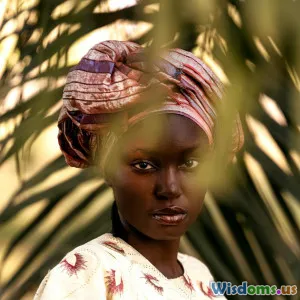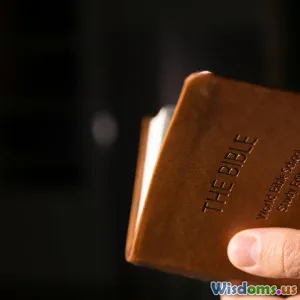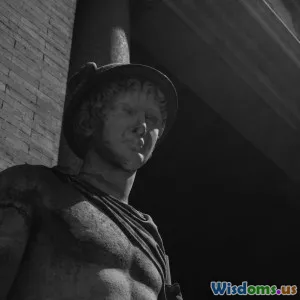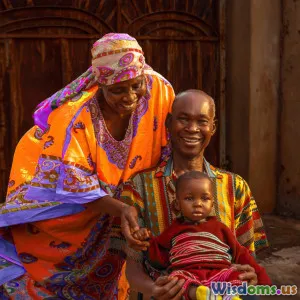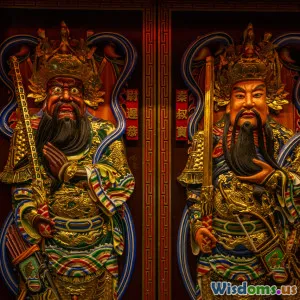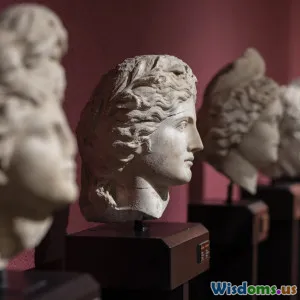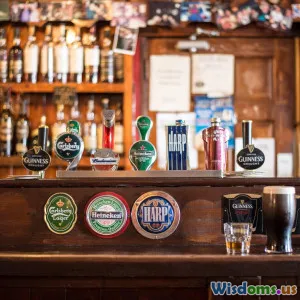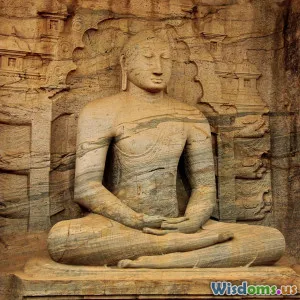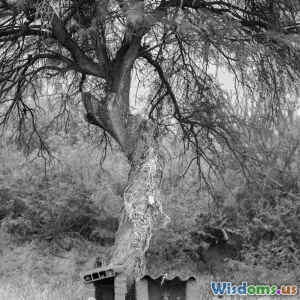
Myth & Legend: A Comparative Study
7 min read Explore the distinct worlds of myths and legends through a captivating comparative study. (0 Reviews)
Myth & Legend: A Comparative Study
Introduction
Stories have been humanity’s oldest companions — carrying values, truths, and imagination across generations. Among these narratives, myths and legends stand tall, integral to cultures worldwide. Yet, they are often mistaken as the same or fused interchangeably in discussions. This comparative study uncovers the unique qualities of myths and legends, excavating their origins, purposes, and functions within societies. Why are myths regarded as sacred and universal while legends root themselves closer to reality? Join us as we dive deep into these timeless tales to understand their gripping appeal and enduring legacy.
Understanding Myths and Legends: Definitions and Origins
What Is a Myth?
A myth is a traditional story, usually involving supernatural beings or events, which explains fundamental truths about the world, nature, customs, or humanity’s place in the universe. Myths often address existential questions—how the world began or why certain phenomena exist. For instance, the Greek myth of Prometheus explains the origin of fire and the sacrifices demanded by the gods, embedding moral and spiritual lessons.
Myths are typically sacred, forming a foundation for religious belief systems. They stem from oral traditions and are transmitted over centuries—at times evolving but retaining core symbolic meanings.
What Defines a Legend?
Legends are narratives rooted closer to historical or quasi-historical events or figures, but embellished through storytelling, often emphasizing heroic deeds or supernatural occurrences. Unlike myths, which deal with universe-forming tales, legends focus on humanity — notable individuals, significant events, or cultural heroes.
Take the legend of King Arthur, which centers on a possibly real British leader from the early medieval period surrounded by mystical elements such as the sword Excalibur and the Round Table. The legend serves purposes such as national identity formation and moral exemplification.
Key Distinctions in Origins
- Myths: Held as universal, sacred, and symbolic, often explaining cosmic laws and natural phenomena.
- Legends: Linked to specific geographical or societal origins, often attempting to blend historical fact with folklore.
Cultural Roles and Functions
Myths as Cosmological and Religious Foundations
Myths have universally served as vessels for religio-cultural knowledge. The Norse myths, such as those involving Odin or Ragnarok, explain creation and destruction cycles, granting their communities a worldview tied to fate, honor, and cosmological continuity.
Anthropologist Bronislaw Malinowski emphasized myths' role in reinforcing social norms through sacred narrative structures promising order amid chaos.
Legends as Moral Exemplars and Historical Anchors
Legends tend to immortalize historical figures shaping identity and values within a society. The Native American legend of Sacagawea exemplifies courage and guidance during expeditionary hardships, functioning as a beacon of resilience.
Legends can act as social memory, shaping collective honor and serving didactic purposes—teaching virtues like bravery or loyalty through story.
Storytelling Techniques and Narrative Structure
Symbolism and Allegory in Myths
Myths often employ rich allegorical language—such as the Greek myth of Persephone, symbolizing the seasonal cycle and agricultural fertility. These narratives operate on multiple levels: literal, moral, and metaphysical.
Complex archetypes—heroes, tricksters, divine beings—serve as tools to explore universal human psychological experiences.
Historicization and Locality in Legends
Legends frequently root themselves in recognizably human experiences wrapped in local color. For instance, the Robin Hood legend reflects social justice narratives in medieval England but adapts in numerous regional versions.
This ties the story to places, moments in time, and social contexts, making legends more tangible yet flexible over history.
Overlaps and Intersections: When Myth and Legend Blur
Certain narratives straddle myth and legend categories, making strict classification challenging. Gilgamesh is an ancient Mesopotamian figure hailed as a king (legend) with epic divine encounters (myth).
Similarly, The Mahabharata blends religious philosophy, mythic cosmology, and historical episodes.
This interplay reflects storytelling’s fluidity, influenced by cultural transmission modes and evolving social needs.
Modern Relevance and Influence
Popular Culture
Both myths and legends inspire modern media, from Hollywood films like Clash of the Titans (mythic themes) to series such as Merlin (legendary lore). They continue guiding archetypal characters in storytelling fields.
Psychological Insights
Carl Jung’s theory of the collective unconscious heavily draws on mythic archetypes, showcasing psychological significance extending beyond folklore.
Cultural Identity and Revival
Globally, indigenous groups reclaim legends and myths to restore cultural pride—seen in Māori storytelling revitalization or Yoruba myth reinterpretations.
Conclusion
Myths and legends, though often tangled, constitute unique narrative forms integral to human culture and consciousness. Myths answer the cosmos’s mysteries through sacred symbolism, while legends tether cultural memory to human acts embodied in time and place. Their enduring power arises from timeless human needs: to understand existence, preserve identity, and inspire action.
Unlocking their distinctiveness enriches our appreciation of global heritage, inviting us to explore the depths of human imagination intertwined with reality. As you reflect on myths and legends, consider how they shape your worldview and values—revealing how storytelling remains the pulse of civilization.
References:
- Malinowski, B. (1926). Myth in Primitive Psychology.
- Jung, C. G. (1964). Man and His Symbols.
- Campbell, J. (1949). The Hero with a Thousand Faces.
- Leeming, D. (2010). Mythology: The Voyage of the Hero.
Embark on your own journey to uncover myths and legends that shaped cultures and perhaps, your world too.
Rate the Post
User Reviews
Popular Posts












